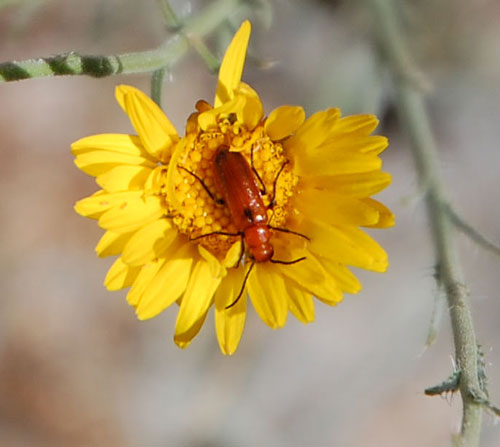Orange Beetle
Nemognatha

Orange blister beetles (several similar species) are common on spring flowers. They feed there on pollen and petals. This one is on an inforescence of Lacy Tansy Aster (Xanthisma spinulosum) and was observed in the Estrella Mountain Wilderness, Maricopa Co., Arizona, USA on 29 March 2009.
Meloidae -- Blister Beetle Family
Nemognatha adults are frequently observed on the flowering heads of composite flowers (Asteraceae) in the Sonoran Desert in spring. They feed on pollen, nectar and flower petals to supplement the nutrition they consumed as larvae. The first larval stage of blister beetles is called a triungulin. It is minute and mobile on short legs. Adult blister beetles lay enormous numbers of eggs and the resulting triungulins search the soil and crevices for nesting bees. There they enter a bee's brood chamber and latch onto a developing bee grub. The triungulin thus parasitizes the bee grub which eventually dies and blister beetle larva develops into a pupa and later emerges as a new blister beetle.
Like other blister beetles, Nemognatha carry cantharidin toxins that can interfere with the vertebrate nervous system. The conspicuous orange coloring is an aposemtic warning to insectivores. In case you were wondering, these insects are not for eating.